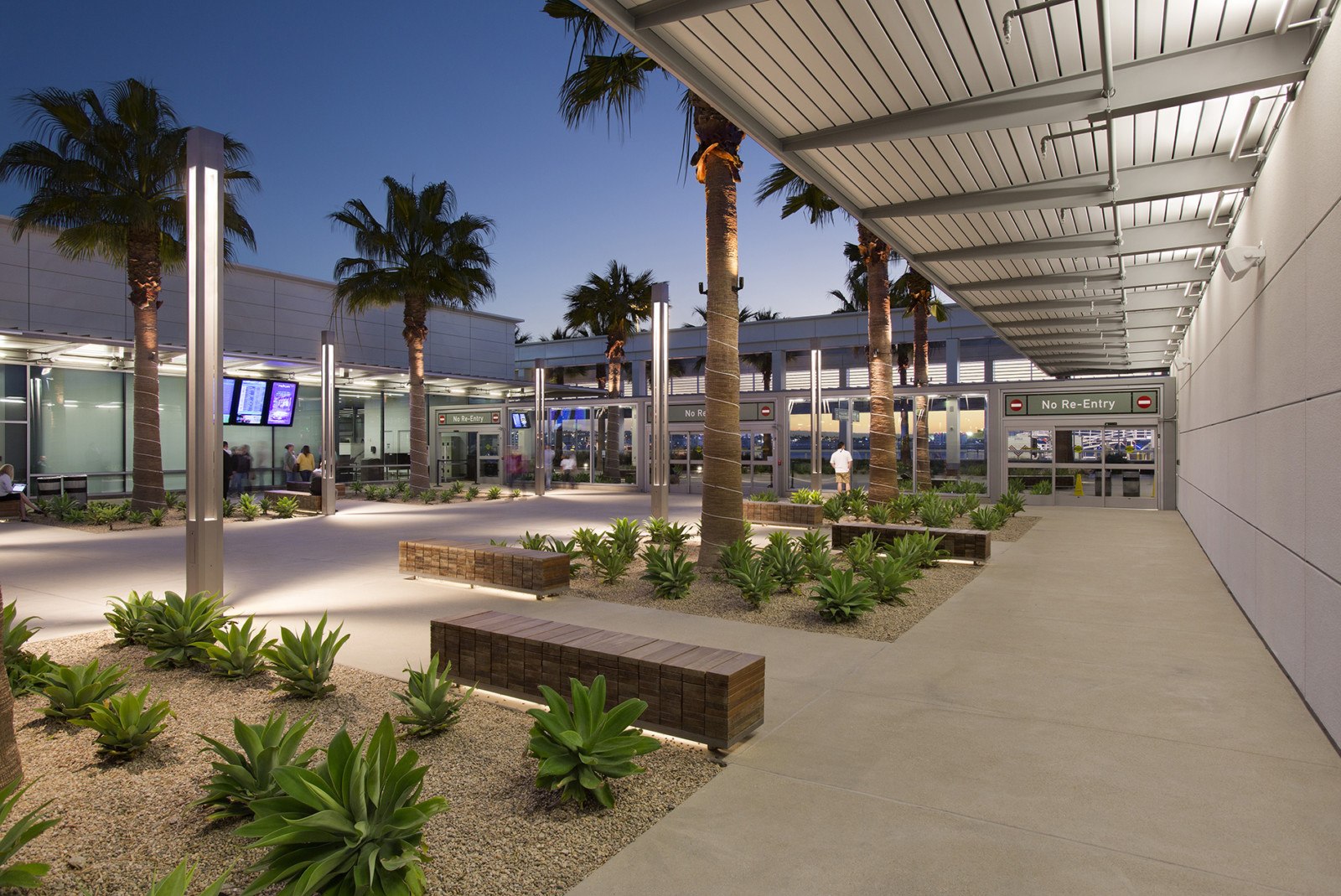In this Q+A, Paul Auguste, a director of HOK’s Aviation + Transportation group in New York, describes how the pandemic has affected the design of airport terminals and the passenger journey.
How is the COVID-19 pandemic affecting the design of passenger terminals?
For more than a year, we have worked with clients to analyze existing terminal plans and implement social distancing protocols for passengers as they move from curb to gate. Many recommended changes will remain in place for the foreseeable future, while other changes will continue to evolve as travelers adapt to the ‘new normal.’
This has included redistributing ticketing kiosks as well as adding automatic electronic TSA queue gates and amenities. PPE kiosks, assigned space for wellness screening and pop-up medical facilities have also been incorporated. Biometric monitoring is here to stay. Clear, well-executed messaging throughout a terminal can reassure people of the extensive measures that have been put in place to protect their health and well-being.
We have made recommendations on touchless technology to minimize touchpoints in high-traffic spaces. Retail and food and beverage offerings will continue to trend toward touch-free payment. Opt-in retailers like Amazon Go and Clear will become more common, as they can track exactly what each traveler takes and bill them electronically. This further streamlines the experience and staffing needs.
Some airports are exploring additional touchless technology. Minneapolis-St. Paul International Airport has launched a delivery droid that gives passengers touchless, automated access to concessions at the gate.
How can you design terminals to be healthier places?
Designing outdoor spaces and other biophilic elements is an important step toward creating healthier spaces with a strong sense of place. We can help airports leverage exterior holdrooms, outdoor interstitial spaces and curbside check-in areas to give passengers more comfortable, open-air experiences.
Long Beach Airport (pictured above) has used its exterior concourse holdroom to give passengers access to food and beverage offerings and seating outdoor, in the fresh air.
Mechanical system designs have moved beyond ASHRAE standards for outdoor ventilation, increasing indoor air quality by introducing more fresh air changes per hour.
How can you future-proof new airport buildings to be better prepared for future events like a pandemic?
In the near term, terminal design will focus on increasing efficiencies and designing multipurpose spaces.
Over the long-term, terminals must be future-proof: flexible and modular. We will design terminals to accommodate growth and expansion. They will need to be able to seamlessly adjust to unforeseen circumstances like social distancing, changes in security measures and more.
